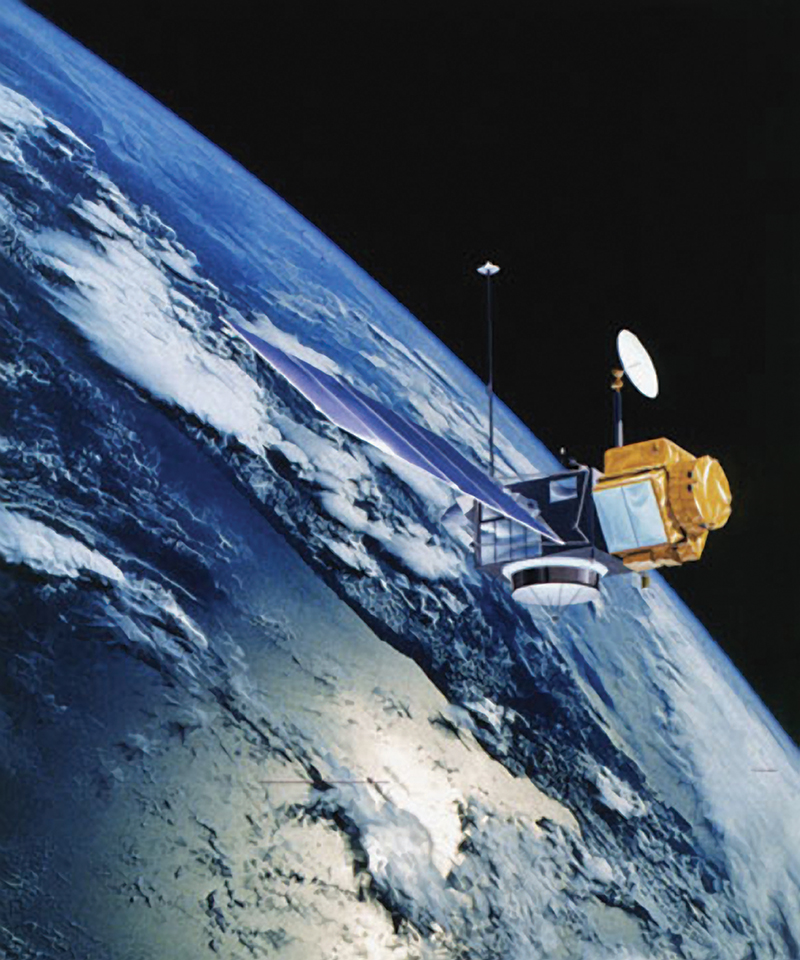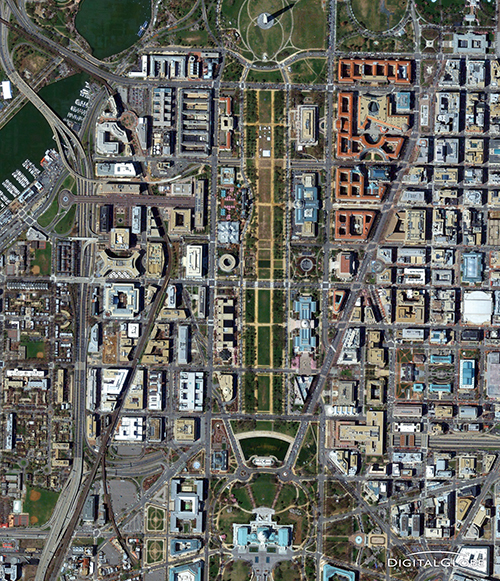
GPS Software Packages Deliver Positioning Solutions
Originating Technology/NASA Contribution
To better understand and predict global climate, scientists look to the Earth’s oceans. Natural forces like wind, storms, and heat affect ocean surface and sea level, and these changes can shed light on short- and long-term global climate patterns.
With the goal of tracking ocean currents and temperature over time, in 1979, NASA’s Jet Propulsion Laboratory (JPL) started planning for TOPEX, a topography experiment to launch a satellite altimeter into space to measure the height of the world’s oceans. Before scientists could launch TOPEX, however, they needed a way to obtain precise location information about where TOPEX was when it took measurements. To this end, JPL developed an innovative software program called the GPS (global positioning system)-Inferred Positioning System and Orbit Analysis Simulation Software, abbreviated as GIPSY-OASIS, to process and calculate data to determine a spacecraft’s position.
In 1992, TOPEX was sent into orbit, and JPL achieved better-than-expected results. GIPSY-OASIS was able to pinpoint the location of TOPEX within just 2 centimeters. In addition, long-term results from TOPEX allowed scientists to observe El Niño, an oscillation of the ocean-atmosphere system characterized by unusually warm ocean temperatures, for the very first time.
Since the success of TOPEX, JPL has refined GIPSY-OASIS to become a sophisticated system that calculates accurate positioning information—not just for NASA, but for commercial entities as well. A companion software package called Real-Time GIPSY (RTG) was developed to provide positioning in certain time-critical applications.
Partnership
First featured in Spinoff 1999, the GIPSY and RTG software packages incorporate special GPS algorithms developed at JPL to deliver highly accurate positioning capabilities to a broad array of space, airborne, and terrestrial applications. In 2004, the precision GPS software was inducted into the Space Foundation's Space Technology Hall of Fame. Hundreds of commercial and non-commercial licenses for GIPSY and RTG have been released including more than 200 science and non-profit user licenses of GIPSY on a no-fee research basis.
One of the commercial organizations licensing GIPSY is Longmont, Colorado-based DigitalGlobe. In 2004, Doug Engelhardt, a principal systems engineer at DigitalGlobe, was looking for a new method for accurate orbit determination of the company’s high-resolution imaging satellites. When he learned about the advanced capabilities of GIPSY, including its processing speed and accuracy, he decided to try it out.
Product Outcome
While TOPEX takes measurements of Earth’s oceans, DigitalGlobe’s satellites take pictures of Earth’s surface. Like JPL, DigitalGlobe needs to know precisely where a satellite is when it gathers information. In order to place pictures accurately on a map, DigitalGlobe must know the location of the satellite when it shoots pictures of Earth, as well as the satellite direction when it took the picture. By combining this information, DigitalGlobe can assemble the pictures accurately to create high-resolution imagery of Earth.
Engelhardt explains that DigitalGlobe’s satellites receive location information in space just like a hand-held GPS unit receives location information on Earth. The satellite then transmits the GPS location data as well as image data to one of the company’s ground stations. It is sent back to DigitalGlobe’s headquarters where GIPSY processes it. “As soon as we receive the data, the GIPSY process is kicked off. For every image that is processed, we need to know the precise location of the satellite, at the time it was taking the picture. After this is determined, the precise location data is linked with the images,” he says.
By utilizing the licensed JPL technology, DigitalGlobe is able to produce imagery with highly precise latitude and longitude coordinates. This imagery is then made available to customers through an online platform and image library.
As one of two providers of high-resolution Earth imagery products and services, DigitalGlobe supplies imagery for a variety of uses within defense and intelligence, civil agencies, mapping and analysis, environmental monitoring, oil and gas exploration, infrastructure management, Internet portals, and navigation technology. As of March 2010, the company’s content library had more than 1 billion square kilometers of Earth imagery, with 33 percent of it being less than 1 year old.
The company has a variety of city, state, and county government clients. Among other projects, these groups use the imagery for emergency response and infrastructure planning. “They keep track of the landscape in areas that are being developed with shopping centers, roads, and housing. They might look at the amount of trees and landscaping in an area, and then run computations on the amount that is paved, and how much runoff they need to account for in the drainage systems,” describes Engelhardt.
Another major client of DigitalGlobe is Google, a provider of Internet search tools and services. Google uses the imagery for its Google Earth and Google Maps applications, providing a base layer of satellite imagery that Google can place overlay information on, such as roads, residences, and businesses. With Google Maps, users enter a single address or a starting and ending address, and then have the option to view the location or route with or without satellite pictures. If users choose the satellite view, they can see landmarks and other points of interest along the way. With Google Earth, users can enter an address or location and view, zoom-in, and fly through detailed satellite imagery of that specific location.
For a similar mapping platform, DigitalGlobe supplies imagery to Bing, a provider of Internet search tools and services from Microsoft. In addition, Nokia purchases DigitalGlobe imagery to use with its GPS service on select Nokia cell phones. Insurance companies also purchase DigitalGlobe’s satellite imagery to get a distant look at damage resulting from natural disasters like hurricanes and floods, without having to visit the location. The news media are another frequent user of DigitalGlobe’s satellite imagery to provide a bird’s eye view of a newsworthy location.
Engelhardt says the NASA license has been invaluable to the company’s success. “The capability provided by JPL has been huge. A vast amount of research and effort went into the software so it could be used by industry.”
For the future, DigitalGlobe plans to focus on standardizing the imagery so it is easy for clients to use. “We have imagery and the customer has applications, but getting the formats to go between one another is a lot of work. As we build the commercial market, that is one of our big efforts. The government has been using satellite imagery for years, but for commercial customers, it is brand new.”
Google Earth™ and Google Maps™ are trademarks of Google Inc.
Bing™ is a trademark of Microsoft Corporation.
DigitalGlobe produces satellite imagery with highly precise latitude and longitude coordinates and then supplies it for uses within defense and intelligence, civil agencies, mapping and analysis, environmental monitoring, oil and gas exploration, infrastructure management, Internet portals, and navigation technology.

When looking for a new method for accurate orbit determination of the satellites taking pictures like the one above of Washington, D.C., DigitalGlobe turned to JPL’s GIPSY software. The software allows DigitalGlobe to make imagery with precise latitude and longitude coordinates.

Launched in 1992, TOPEX gathered data for determining seasonal cycles such as El Niño. To pinpoint where TOPEX was when it recorded information, NASA's Jet Propulsion Laboratory (JPL) developed GPS (global positioning system)-Inferred Positioning System and Orbit Analysis Simulation Software (GIPSY-OASIS).













